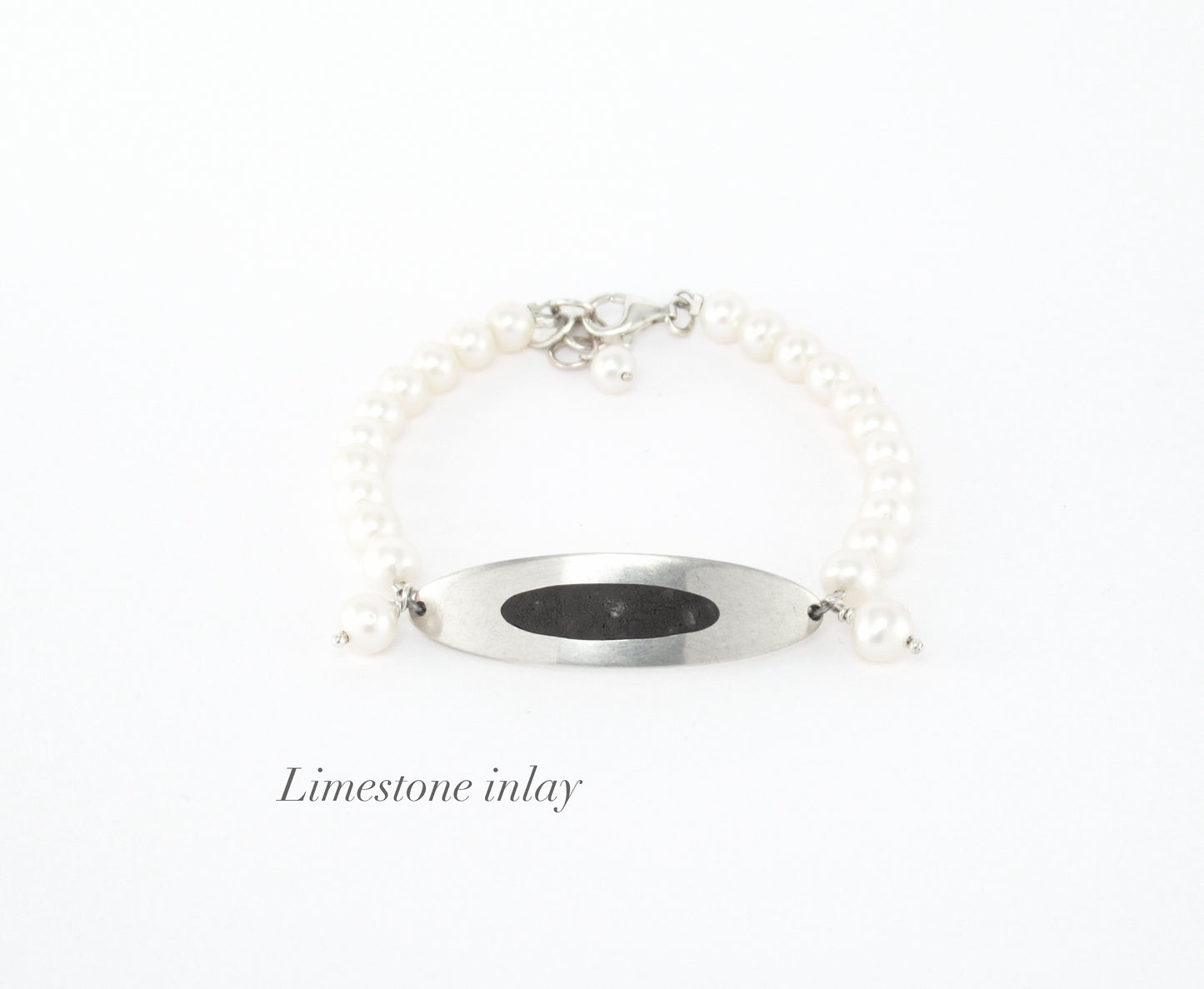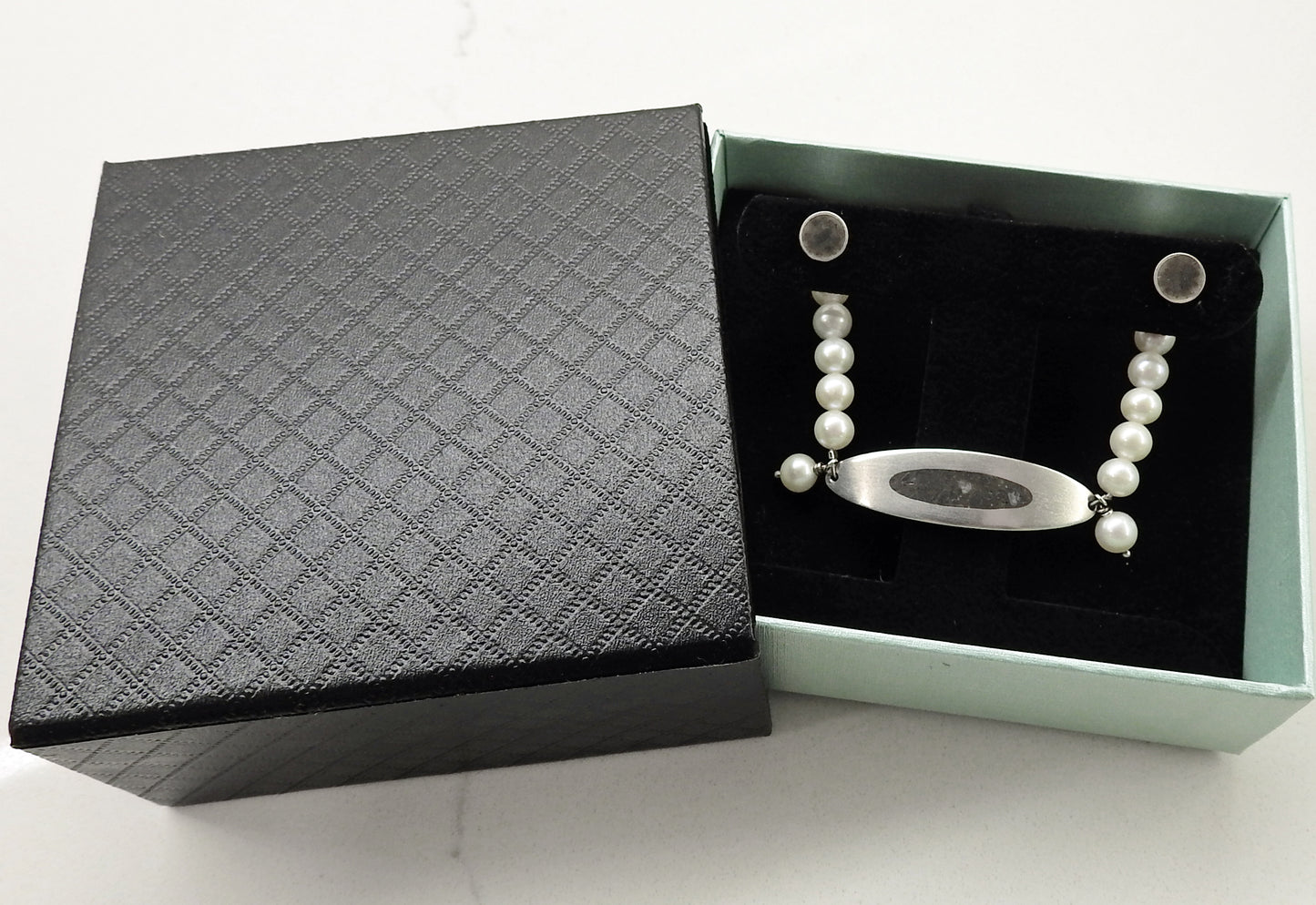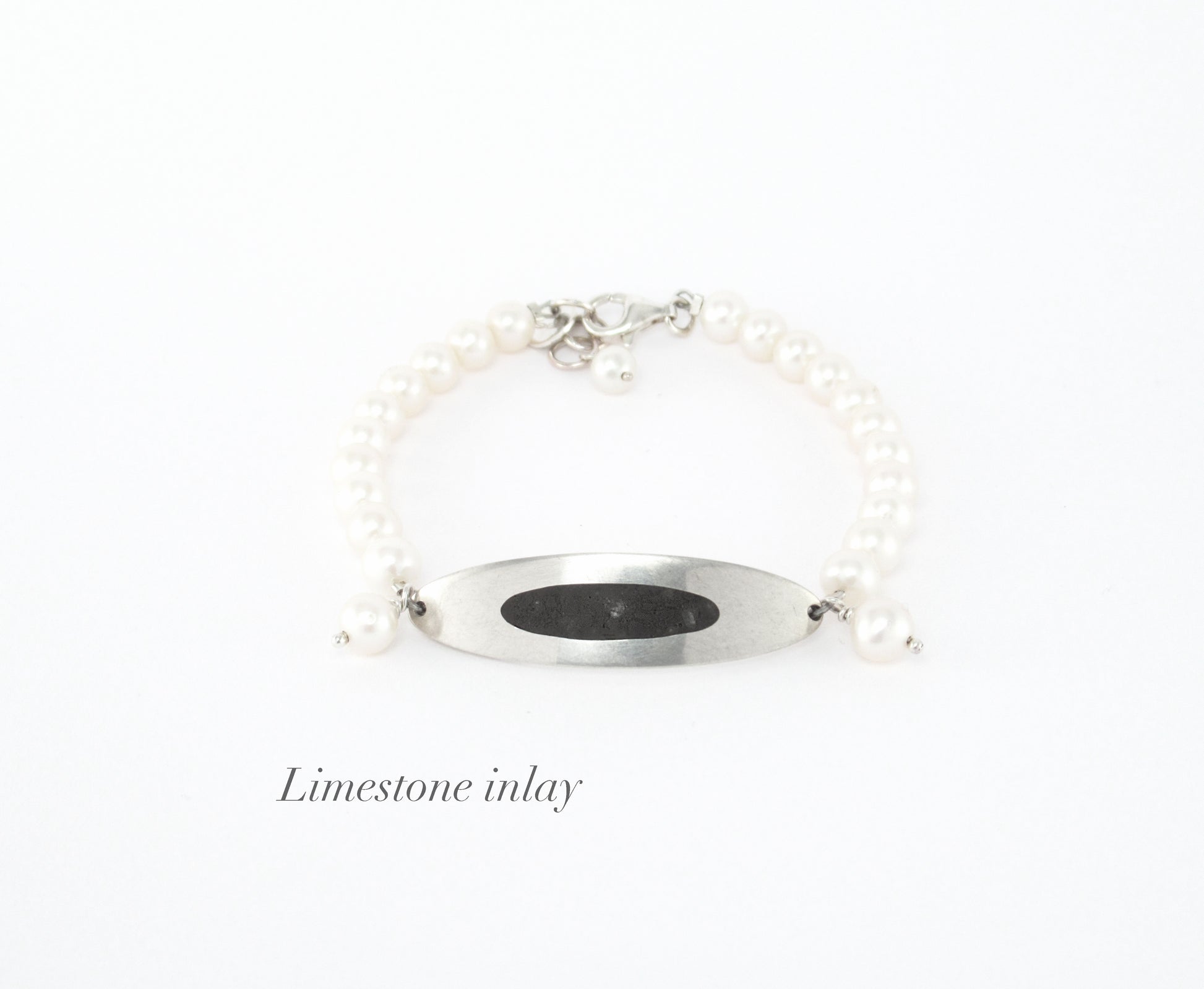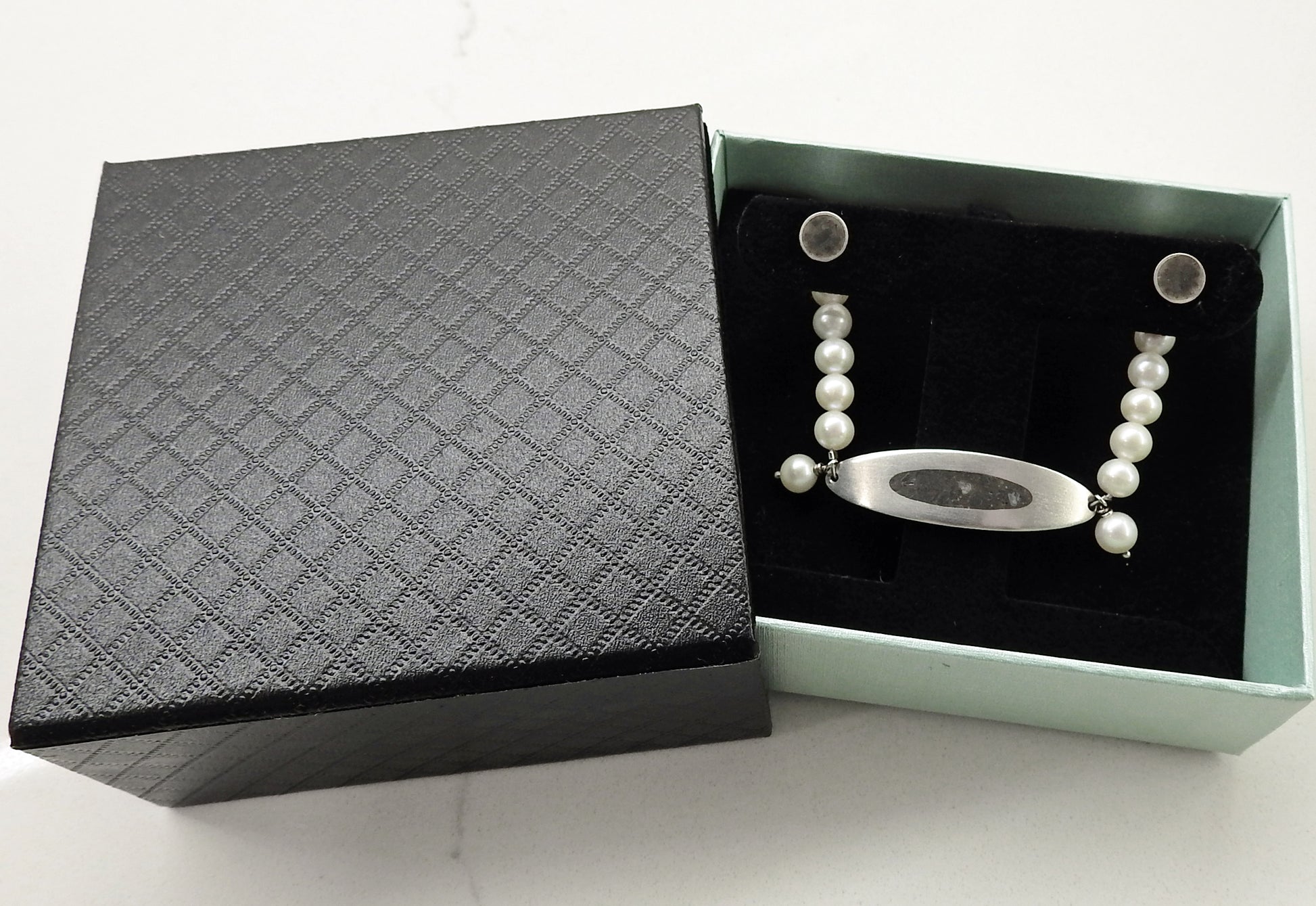Pearl and limestone
Pearl and limestone
Couldn't load pickup availability
Pearl and limestone oval bracelet ~ White cultured freshwater pearls with 39mm x 10.7mm sterling silver oval with limestone inlay, two small dangle accent pearls on either side of the oval with a tied pearl at the clasp.
Limestone:
Properties: Limestone is an assisting stone used to enhance healing properties, encourages purification, reminds us of our innocence, grounds and centers us and entices positive thoughts. Due to its grounding make-up of clay, sand, organic remains, iron oxide and other materials, many limestones exhibit different colors, especially on weathered surfaces. Therefore, the color of the limestone can help assist with colors of the Auric field and Chakra centers. Red and tan stones for the Base or Root Chakra, orange for the Sacral/Spleen Chakra and so on. Limestone is the root of many crystals including, agate, calcite, dolomite, lapis and Septarian, just to name a few. Therefore, it takes on the metaphysical properties of its additional minerals. This is why limestone is such a mult-dimensional stone.
Folk Remedies: Limestone is a healing stone beneficial to overall health and well being. It gives relief for muscle spasms, nurtures, grounds and works primarily well on the Root Chakra.
History: Limestone is a sedimentary rock. Like most other sedimentary rocks, limestone forms in shallow, calm, warm marine waters and is composed of grains. Most grains in limestone are skeletal fragments of marine organisms such as coral or foraminifera. Other carbonate grains comprising limestones are ooids, peloids, intraclasts, and extraclasts. These organisms secrete shells made of aragonite or calcite, and leave these shells behind after the organisms die. Limestone often contains variable amounts of silica in the form of chert (chalcedony, flint, jasper, etc.) or varying amounts of clay, silt and sand carried in by rivers. Because of impurities, such as clay, sand, organic remains, iron oxide and other materials, many limestones exhibit different colors, especially on weathered surfaces.Their biological origin is often revealed in the rock by the presence of fossils. Limestone is partially soluble, especially in acid, and therefore forms many erosional landforms. These include limestone pavements, pot holes, cenotes, caves and gorges. Such erosion landscapes are known as karsts. During regional metamorphism that occurs during the mountain building process, limestone recrystallizes into marble.
Share






